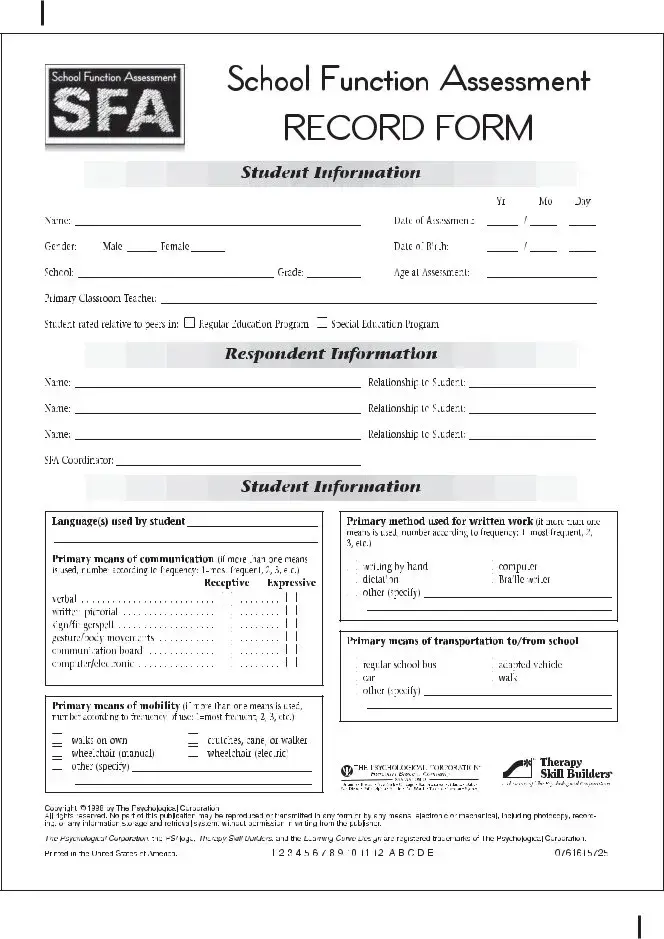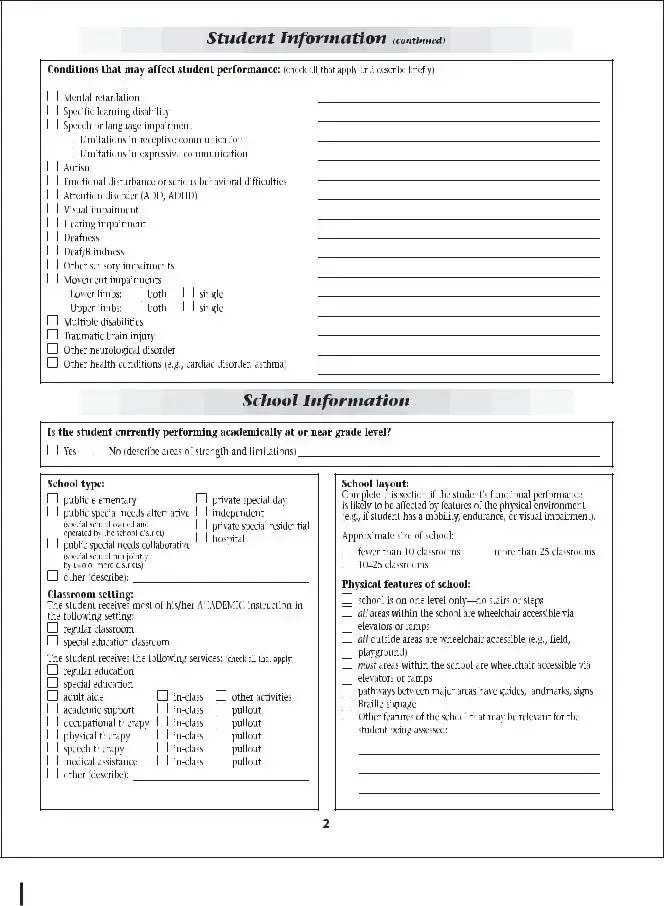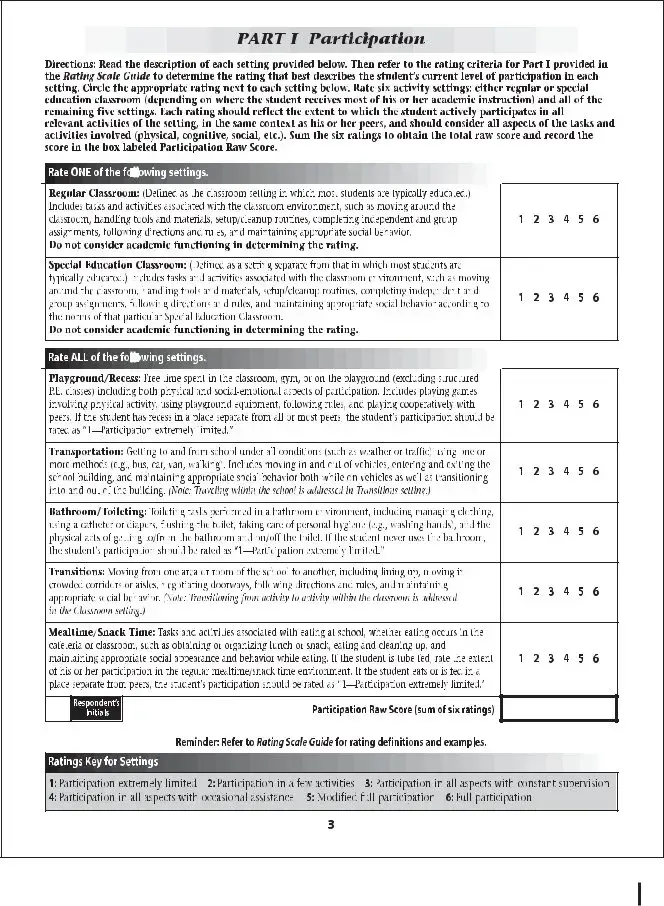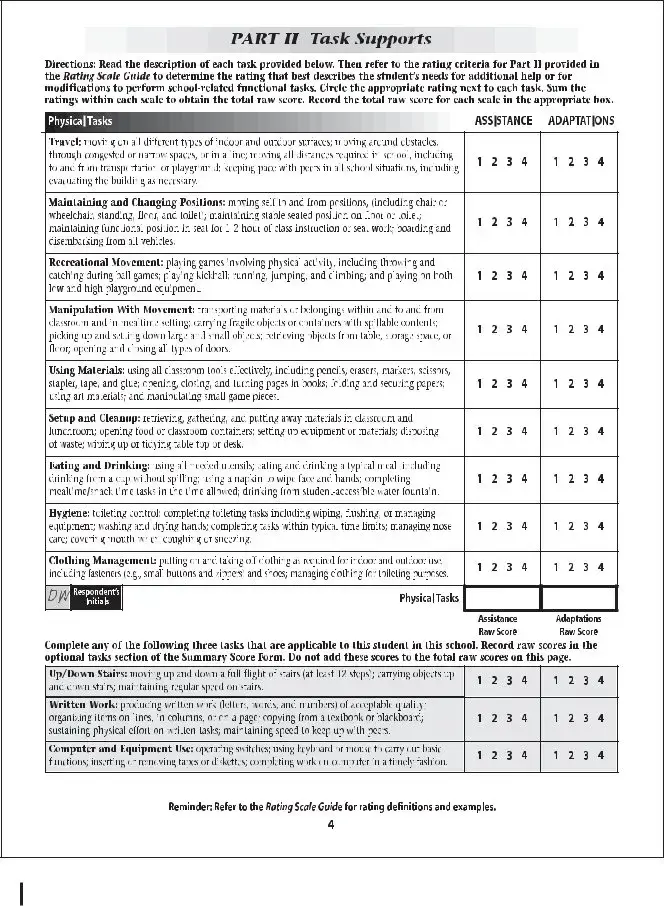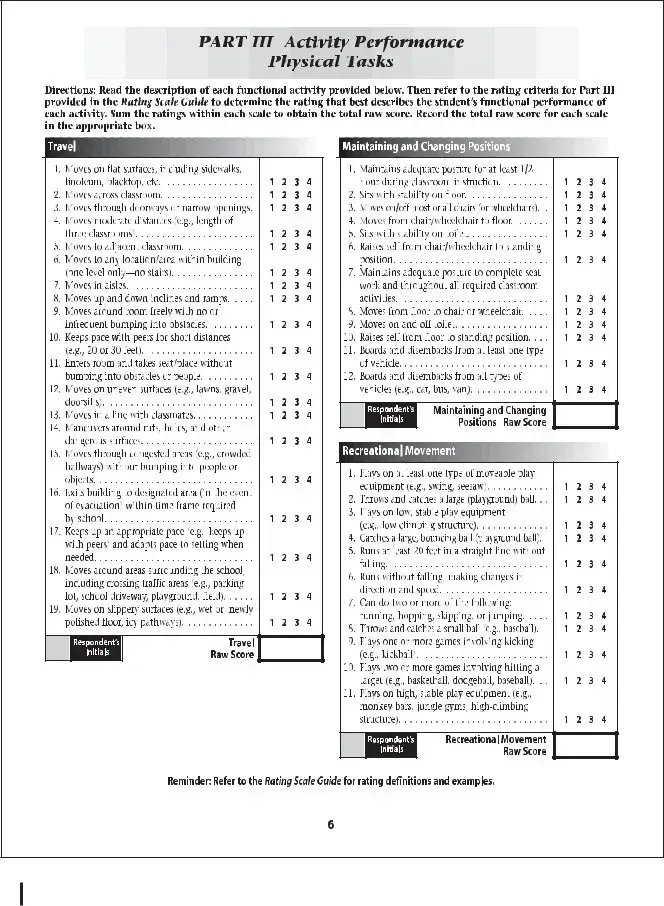In the realm of educational tools tailored for capturing students' abilities in school environments, the School Function Assessment (SFA) form emerges as an instrumental resource. Developed with the aim of evaluating students' performance levels, participation in diverse school activities, and the need for assistance in those activities, this form offers a comprehensive overview that benefits educators, parents, and students alike. With its roots in enhancing educational strategies, the SFA facilitates the creation of tailored educational plans that align with each student's unique needs. Items contained within this form assess a broad spectrum of functions across various settings and scenarios encountered in the school day, ranging from classroom participation to physical mobility on school premises. Significantly, this tool goes beyond mere academic performance to delve into crucial aspects of social integration and independence, offering a holistic view of a student's school functioning. Copyright© 2008 by Pearson Education, Inc. or its affiliate(s), the SFA form exemplifies a commitment to fostering environments where every student can thrive. Through capturing detailed records of individual student experiences and challenges, the form plays a pivotal role in guiding decisions around interventions, accommodations, and supports necessary for fostering success within the school community. As such, the School Function Assessment form stands as a key element in the pursuit of inclusive and adaptive education.

